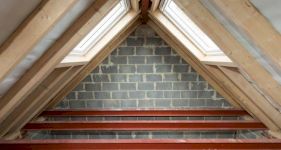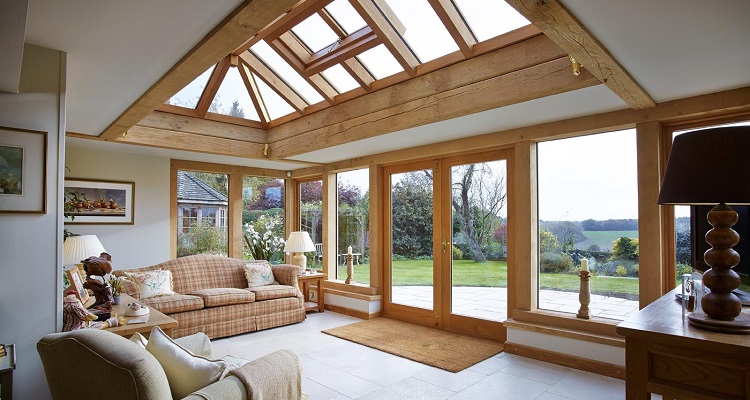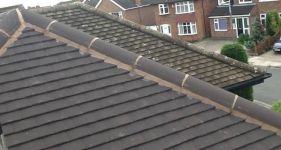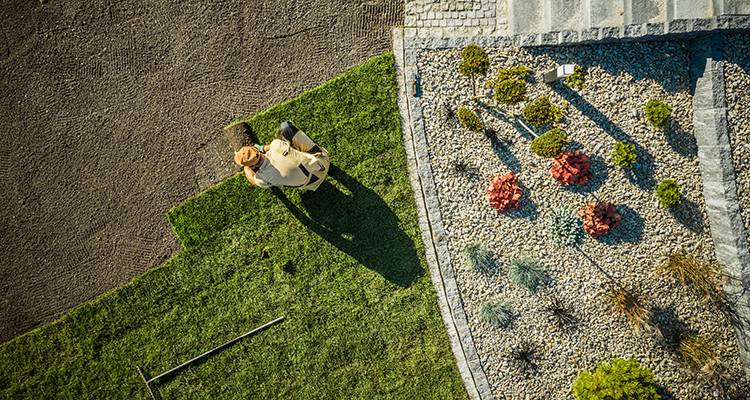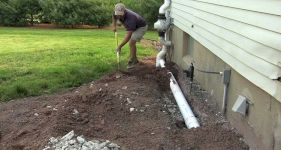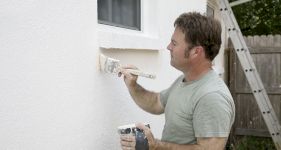Capping Soffits and Fascias Cost
- The average cost of capping fascias and soffits is around £800.
- The job will take approximately 1 day to complete.
- A complete pricing breakdown, which includes cost factors to consider, along with what such a task usually involves.
- How long the job should approximately take, and a general overview of what kind of jobs can be performed.
- How to find and hire a roofing specialist.
Trying to find out how much it will cost to cap your fascias and soffits?
In this guide, we break down all capping prices for different house sizes, labour fees and the cost of capping boards. So that anyone can determine how much it will cost them overall.
Ready for a quote?
We have a range of roofers ready to offer you a free quote!
For more information, take a look below!
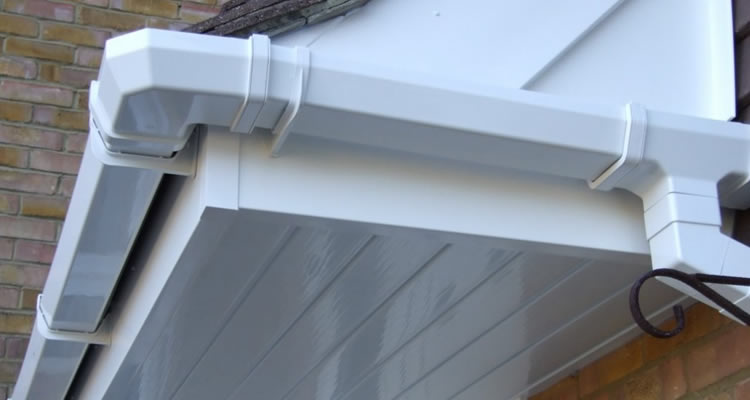
£800
Table of Contents
- How Much Does a Capping Board Cost for Fascias and Soffits?
- Supply Only Costs
- Additional Costs
- Labour Costs and Timescales
- What is Fascias and Soffits Capping?
- Cost Factors of Capping Fascias and Soffits
- What's Involved in Capping Fascias and Soffits?
- Can I Cap Fascias and Soffits Myself?
- Do My Fascias and Soffits Need to be Capped?
- Cost of Removing Fascias and Soffits Caps
- Checklist: Hiring Contractors for Capping Fascias and Soffits
- FAQs
How Much Does a Capping Board Cost for Fascias and Soffits?
Capping fascias and soffits is cost-effective compared to the typical fascia and soffit replacement cost. It involves capping with uPVC to prolong their lifespan and make maintenance easier.
The cost to cap fascias and soffits varies depending on the specific layout and size of your home.
To cap the fascias and soffits of an entire 3-bedroom home will set you back around £200 for the materials and about £600 for labour, with the job taking around 1 day, provided there aren’t any complications or setbacks.
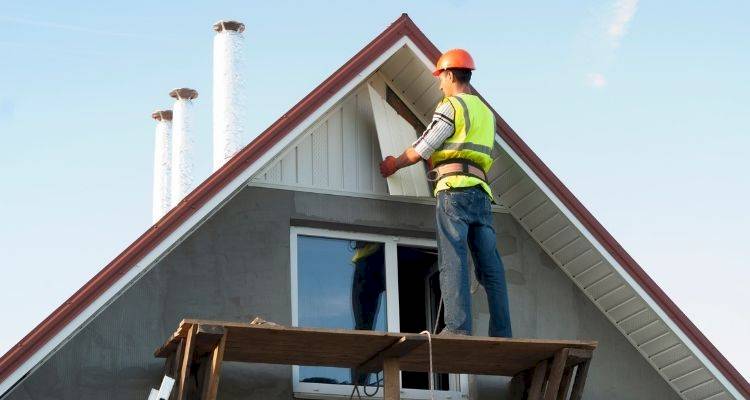
The size of the soffits also needs to be taken into account. For example, if you live in a tall home that isn’t large in the sense of the surface area, you will naturally need fewer materials to cap your home. Similarly, the price will increase if the opposite is true for buildings like bungalows that tend to cover more land.
Consider how easily accessible your home is. If you don’t have much access from the side of your home, a contractor may struggle to reach those areas of your home. For accessibility issues, you may need to rent a scaffolding structure in order for the work to be carried out. Again, this will incur further costs.
There are multiple issues with the soffits and fascias on my roof, and I figure it's time to replace them. What is the best type of soffits and fascias I should purchase based on durability?
Capping Fascia and Soffit Prices
The overall soffits and fascias cost will include materials, labour and installation expenses:
| Job Description | Avg. Cost |
|---|---|
| Capping a 2-Bedroom Terraced Home | £770 |
| Capping a 3-Bedroom Semi-Detached Home | £800 |
| Capping a 4-Bedroom Semi-Detached Home | £1,150 |
| Capping a 3-Bedroom Detached Home | £1,100 |
| Capping a 4-Bedroom Detached Home | £1,500 |
| Bungalow | £700 |
| Capping a Single 15m Wall | £290 |
| Capping fascia and soffit boards to front and gable end wall, 24m length in total | £445 |
Supply Only Costs
As you can see from the table above, a lot of the expenditure comes from the labour costs, and not the actual materials used.
You can buy all of these materials in your local DIY store, and you may be able to pick up some good deals by shopping for the materials yourself.
Fascia prices depend on:
- Thickness
- Profile
- Finish
The uPVC fascia cost per metre can vary from £8 to £10 for standard white fascias or £12 to £15 for woodgrain or coloured finishes.
Meanwhile, the cost of soffits per metre is generally lower, averaging £4 to £6 per metre for a basic board.
So, for a 3-metre soffit board, the typical cost is between £12 and £18, while vented or coloured boards will add to the cost and take it to around £20 or more.
Additional Costs
Additional costs can easily crop up when you have your fascias and soffits capped. Jobs like replacing roof tiles and roof cleaning can be quite tough to determine from the ground, so it's worth getting them looked at while you have contractors working on your roof.
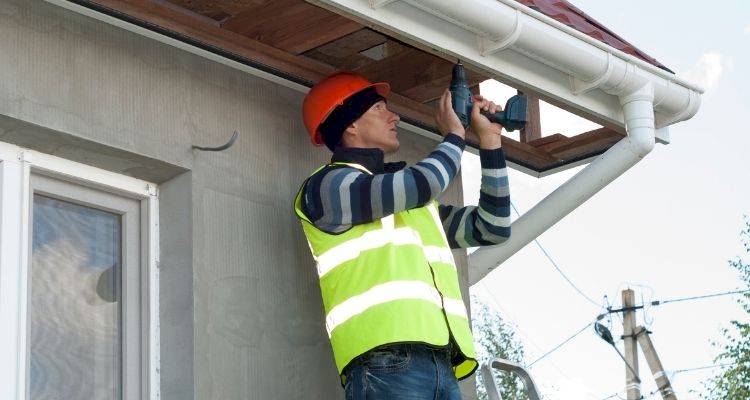
To start with, you'll need to factor in the additional cost of scaffolding hire:
Scaffolding Hire Cost
If the contractors discover they are having trouble accessing your roof, it may be necessary to secure scaffolding hire. Sometimes, it’s beneficial to hire scaffolding even if there aren’t any access issues, as it can help speed the job up and allow all contractors to work easily at height.
Scaffolding hire costs depend on the height of your system and the duration you need it for. Typical scaffolding costs are around £4,500.
Once your scaffolding is in place, here are some jobs you can consider getting done at the same time as your fascia and soffit capping:
Roof Cleaning Cost
It's hard to see your roof's condition while you're on the ground - but your contractors will be able to see more while they're working at height. If they notice a buildup of moss and algae, it's worth removing it while the scaffolding is up around your property to make the most of your hire period.
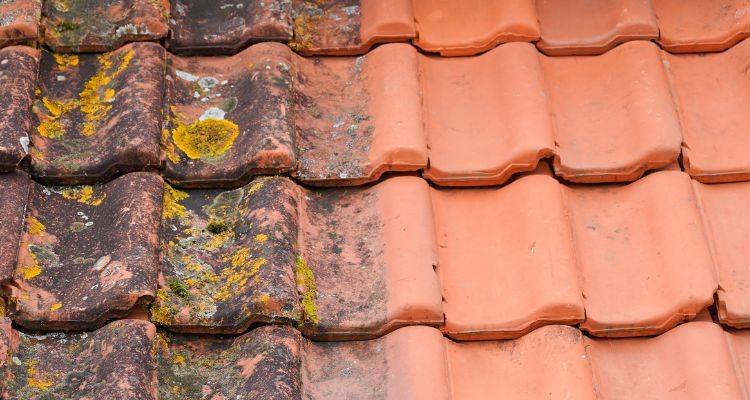
Roof cleaning costs are typically around £450, taking between 3 and 7 hours depending on the size of your property and the ease of access to the roof itself.
Replacing Roof Tiles Cost
While the contractors are working on your roof, it’s easy for them to identify any issues you may have lingering that would be beneficial to repair - broken roof tiles being one.
No one wants a leaky roof, and cracked, damaged or deteriorating roof tiles are a surefire way of letting unwanted moisture into your property, leading to potential damp problems.
Roof tile replacement costs around £170 per 5 roof tiles. This is a small cost compared to the full total for an entire roof replacement, which can be over £10,000.
Solar Roof Tiles Cost
Perhaps you want to upgrade your home's energy source by installing solar roof tiles or panels on your roof.
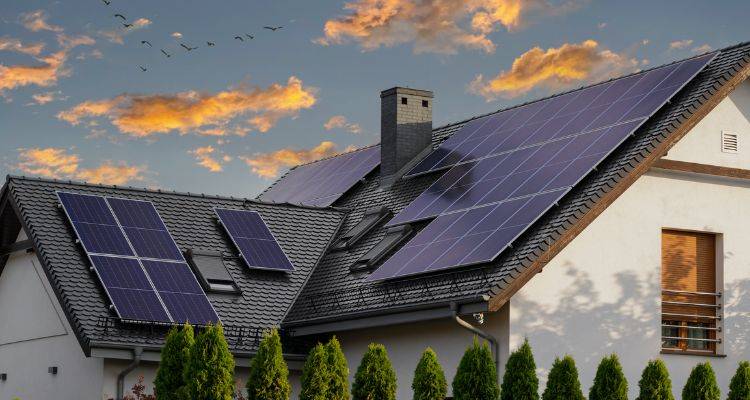
The cost of solar roof tiles is higher than panels, totalling £12,000 versus the solar panel cost of £4,000.
Solar tiles cost more because of their advanced design that blends into your property's roof almost seamlessly.
Solar panels, on the other hand, are fairly obvious to spot - but their bigger size means they're quicker to install, and there are more solar panel manufacturers around than there are solar tile makers, helping them to be priced more competitively.
I've got a house that needs all the render removing and re-doing. Is it better to render up to the fascia boards or remove all the fascias and render to the top then add the fascias after?
Labour Costs and Timescales
Labour is determined by the number of workers the contractor needs and the time the job will take. When you receive a quote, ensure that you clarify what exactly is included in the amount.
As standard, the quote will include materials and labour, but sometimes scaffold hire, waste removal and other costs are incorporated into the price.
Of course, if the job hits any unforeseen delays or setbacks, further charges could be incurred, so have a conversation with the firm you select about these potential problems and find out how they deal with them.
Typically, you should expect to pay £150 to £300 per day for a tradesman to do this work. You will often need two tradesmen working together for this kind of job.
How Long Does it Take to Cap Soffits and Fascias?
Soffit and fascia capping will take longer if you have a larger property or if there are complex access arrangements.
Here are some average time frames:
| Job Description | Duration |
|---|---|
| Capping a 2-Bedroom Terraced Home | 1 Day |
| Capping a 3-Bedroom Semi-Detached Home | 1 Day |
| Capping a 4-Bedroom Semi-Detached Home | 1.5 Days |
| Capping a 3-Bedroom Detached Home | 1.5 Days |
| Capping a 4-Bedroom Detached Home | 2 Days |
| Bungalow | 1 Day |
| Capping a Single 15m Wall | 0.5 Day |
| Capping fascia and soffit boards to front and gable end wall, 24m length in total | 1 Day |
What is Fascias and Soffits Capping?
The majority of roofs are fitted with boards called fascias onto the rafter edges and soffits that fill the gap between the fascia and the edge of the roofline.
Fascias are directly exposed to the elements, whereas soffits are somewhat protected from the weather by the fascias. However, the soffits can still absorb moisture over time, causing them to soften, weaken and rot.
Fascias and soffits are traditionally made from different types of timber, which isn’t the ideal material considering how exposed they are to the weather. With that in mind, more people are replacing their timber fascias and soffits with UPVC ones.
With UPVC, your soffits and fascias are much more protected and require far less maintenance to prevent them from weakening.
While replacing timber with UPVC is a wise investment, it can be quite costly considering the time needed to correctly remove the timber fascias and soffits, and then the cost to install completely new ones.
In fact, it often requires the added cost of scaffolding just to carry out the work safely and efficiently. However, there is an excellent workaround available in this instance.
Instead of replacing your existing fascias and soffits with new ones entirely, you can cap them instead. This way, you protect the timber, improve the aesthetics of your home and remove the requirement for any painting or maintenance.
Cost Factors of Capping Fascias and Soffits
The cost of installing capping for fascias and soffits depends on several factors, with the primary cost factor being the size of your home.
It’s natural that the bigger your home is, the more you can expect to spend on capping work.
Some homes are shaped quite uniquely, which can require more lengths of fascias and soffits, which also bumps up the overall price.

The main issue with timber fascias and soffits is the cost of the materials and the frequency with which they require replacing or repairing.
Hiring scaffolding to solve accessibility issues is one of the most common costs added to capping quotes due to the number of homes that lack the space needed to work at height safely.
Do you render and then put fascia on after, or fascia first and render up to it?
What's Involved in Capping Fascias and Soffits?
Soffits and fascias are traditionally timber boards that protect the edges of your roof and need very frequent maintenance to keep them in any way fit for purpose.
These timber boards require paint, which also results in unsightly peeling paint in not much time at all.
The issues with timber aren’t just aesthetic, as the weakening fascias and soffits will eventually lead to roof decay issues, which are much more costly than capping your fascias and soffits with UPVC.
A solid fix to these problems, without the need to remove and install an entirely new set of fascias and soffits, is to cap them with UPVC to extend their life.
The UPVC capping, or "overcapping" as it is sometimes referred to, will be attached over the existing fascias and soffits, protecting them from rain, wind, and other harsh elements.
It will also act as a kind of guttering system to help dispel rainwater from your roof.
Here’s a quick step-by-step guide to illustrate how capping is done:
- Prepare the existing fascias and soffits.
- The contractor will attach a level string line to ensure the capping is completely accurate.
- The fascia and soffits are fitted with colour-matching nails to ensure they look perfect.
- Gutter brackets are then fitted, or refitted if required, and the gutter is fitted.
- A bird comb is usually fitted to the bottom of the roof tiles to prevent birds from accessing your roof space.
Must vents be added to soffits?
Can I Cap Fascias and Soffits Myself?
Capping fascias and soffits is quite a difficult job. Not because there are too many confusing or particular steps, but because the materials can be tough to work with, and the added complication of working at height can cause some severe health and safety worries.
For these reasons, we would suggest that you enlist the services of a trained and licensed professional.

The biggest issue is with working at height. Even atop scaffolding, mistakes and missteps are amplified when working at height, and a stumble or a dropped tool can become life-threatening.
Trained professionals not only have the experience of working on jobs like fascia capping, but also have experience working safely at height.
However, there are still some aspects of the job that you can do yourself to save on costs, such as purchasing the materials yourself, shopping around for scaffolding hire, and selecting the right contractors to carry out the work.
Do My Fascias and Soffits Need to be Capped?
If you have existing timber fascias and soffits, you could definitely benefit from capping, just based on the longevity of your existing materials. However, some people work out what areas of their homes are worst affected by bad weather, and choose to cap just those areas.
For example, if the houses in your street are built quite close together, the sides of your home may be well protected from the elements anyway, so you’d only need to cap the front and the back.
Benefits of Capping Fascias and Soffits
There are various reasons why you may want to cap your fascias and soffits. These include:
- Cheaper than full replacement.
- Extends the life of the timber underneath.
- Provides a cost-effective boost to the visual appeal of your roofline.
- Offers numerous aesthetic options thanks to the colours available.
You'll also be capping with a material that is easier to maintain than traditional wood. This makes ongoing maintenance more straightforward.
All this said, there are some benefits to retaining wooden soffits and fascias, mainly around their superior structural integrity when compared to UPVC.
Cost of Removing Fascias and Soffits Caps
There are numerous reasons why you could want to remove existing capping on your fascias or soffits. One example is replacing capping to be reinstalled in a different colour or style.
Another reason could be if you wanted to access the roof tiles for a repair or a refurbishment.
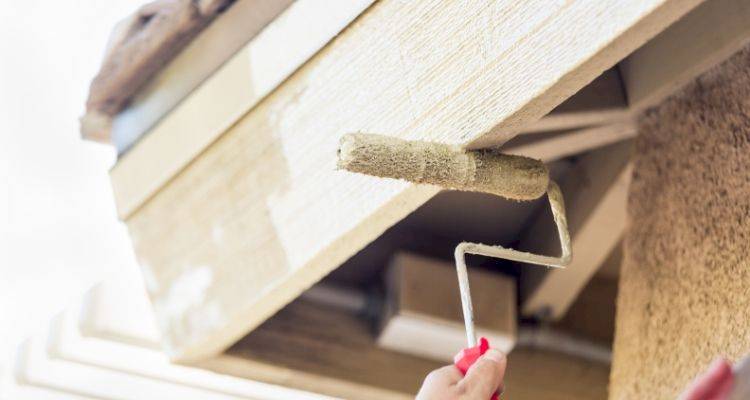
Removing capping is actually a lot more straightforward than installing them, suiting an experienced DIY enthusiast down to the ground. Usually, it just requires removing the screws and being careful to bring the capping down safely.
Once you have it on the ground, you can either give it away for free on several websites, or break it down to take to your local recycling centre.
I'm planning on removing my home's soffits and fascias. Just wondering if these could be thrown out in a skip?
Checklist: Hiring Contractors for Capping Fascias and Soffits
When deciding on which tradesmen or contractor to enlist to perform capping work on your fascias and soffits, it’s crucial to check them over first, before agreeing to hire them for the work:
- Ask them about what experience they’ve had on similar jobs and if there are any houses in the area that you could check out as an example.
- Search for their company online to see reviews from past customers.
- Positive customer reviews are usually the best sign that a company is legitimate and a good fit for the work.
- It’s also important to question them on whether they have all the relevant and necessary qualifications and accreditations to work on your roof, along with any safety protocols that they must adhere to.
- Make sure you get your quote itemised in written format to avoid any surprise costs when it comes to settling up. Be sure to check if waste removal, if required, is included in the quote.
FAQs
What is the difference between replacing soffits and fascias and having them capped instead?
Replacing soffits and fascias is far more costly than capping them. Replacing involves removing the fascias and soffits completely and replacing them with brand-new materials. It’s a lot more time-consuming and expensive, and may be a short-term solution instead of a long-term prevention measure.
Will any trapped moisture damage the timber from the inside?
If the fascias and soffits have been capped by a trained professional, they will allow ample airflow through the capping system. This will allow any trapped moisture or dampness to dissipate without causing any damage.
How much is scaffolding hire for one day?
Scaffolding prices vary depending on the type of scaffolding you need and the duration you need it for. The average scaffolding hire costs £4,500.
What type of tradespeople carry out fascia and soffit capping work?
Your first point of call for this type of work would be a guttering or roofing specialist tradesman. You want this job done correctly, so shop around for the best price with an experienced firm.
Can I cap my fascias and soffits on a budget?
There are a few ways you can try to save some money when fitting fascias and soffits. You can purchase the materials and any added requirements yourself, like scaffolding or roof tile repair. But don’t try to save money on the labouring aspect of the job. This is the most critical aspect that must be completed to the best standard possible.



